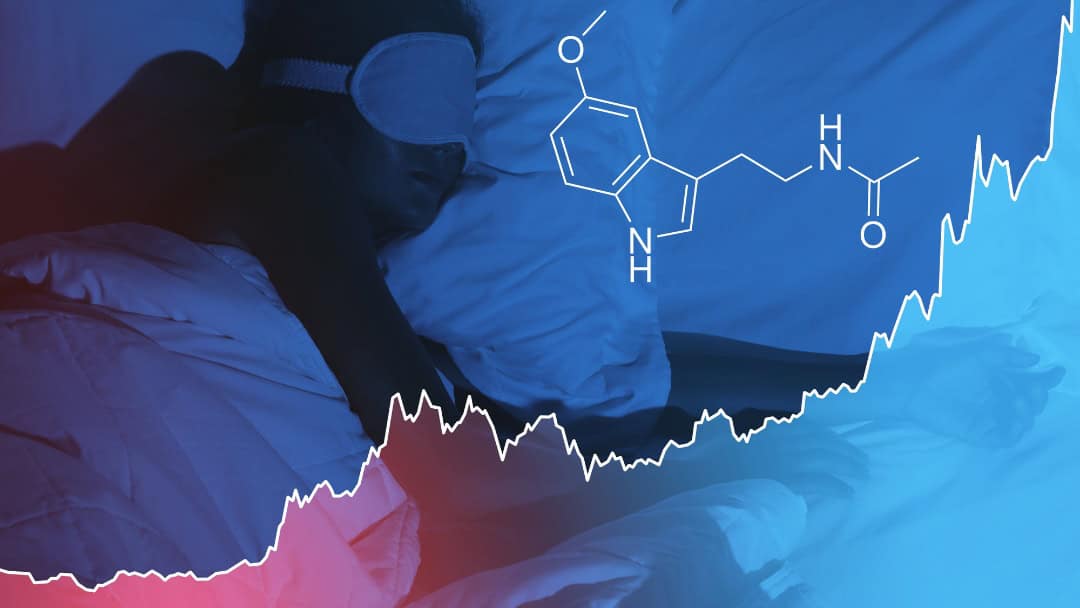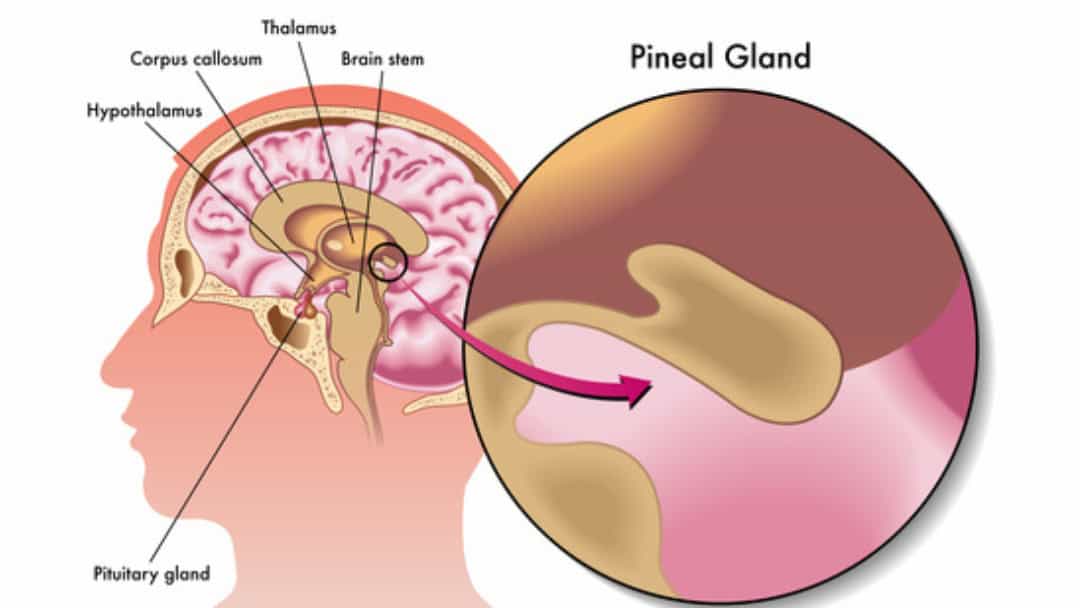What Is Melatonin?
Melatonin as a supplement has now become a household word with so many children experiencing sleep issues. However, most of us are not too familiar with melatonin, the hormone. Melatonin the hormone is produced in every cell in our body, but the major source comes from the pineal gland.
When melatonin is released from the pineal gland, it aids in synchronizing the body’s internal circadian clock and daily rhythm in different parts of the body, with peak levels occurring at night-time. Melatonin regulates the sleep/wake cycle by making the person drowsy and lowering the body temperature.
Melatonin’s response to light and darkness is very important for sleep cycles. For instance newborn babies take about three months before melatonin levels are normal and before the sleep cycle is regulated. Teenagers, on the other hand, have a delay in the release of melatonin which leads to later sleep time and later wake-up time.
Melatonin has often been referred to as the “sleep hormone”, but essentially a person just sleeps better when melatonin is secreted. Many children today struggle with sleep issues. Some have difficulty falling asleep while others have difficulty staying asleep. Children with chronic health conditions great difficulty maintaining healthy sleep patterns of any kind.
The Effect of Stress on Melatonin Production
When stress (especially chronic stress) and anxiety increase, cortisol levels will rise, adrenals will fatigue and the hypothalamic-pituitary-adrenal axis becomes dysfunctional. This domino effect decreases the body’s production of melatonin and alters the body’s natural circadian rhythms; therefore, many children have poor sleep patterns.
However, children with chronic health conditions may have additional sleep deterrents not only because of decreased levels of melatonin but also due to elevated cortisol levels, extreme anxiety, possible elevated testosterone levels, a dominant sympathetic nervous system in fight or flight mode, and many obsessive behaviors. It stands to reason that if children are not sleeping, then neither are the parents. A variety of solutions may be necessary.
How to Supplement with Melatonin
Some parents, working with their healthcare practitioners, have used melatonin supplements which are found in spray, liquid, sublingual, capsule and extended release forms. It is important to work with a healthcare practitioner to determine the appropriate dosing. Here are some natural ways to improve and protect your child’s melatonin production:
- Goji berries, almonds, sunflower seeds, coriander and cherries all have small amounts of melatonin in them.
- Limit TV, computer and smartphone usage at least one hour before going to bed. Artificial lighting disrupts melatonin production.
- During the day get enough bright full-spectrum sun exposure to help create more melatonin in the pineal gland.
- Sleep in complete darkness and keep electrical devices away from the child’s bed.
- Use low wattage yellow, orange or red light bulbs at night to see if necessary.
- Keep bedroom temperature below 70 degrees.
- Have a hot bath 90 to 120 minutes before bed.
- Avoid using loud alarm clocks.
- Try to get your child to have some morning sun (no sunglasses or tinted lenses!) so that their circadian clock gets the message.
- Reduce electromagnetic fields (EMFs) in your child’s bedroom.
Additional Benefits of Melatonin
Recent research on the hormone melatonin has shown that there are many other benefits from this “sleep hormone” that are truly worth considering as a nutritional supplement:
- Powerful antioxidant that crosses the blood-brain barrier
- Reduces excess inflammation
- Provides neuro-protective and anti-aging effects
- Strengthens the immune system
- Regulates mood
- Reported low levels of melatonin in heart disease, multiple sclerosis, epilepsy and post menopausal osteoporosis.
- Controls skin pigmentation – those with insomnia have paler skin
About Teresa Badillo
In the 1980s she worked overseas in Rome, Italy at the Japanese Embassy in the office of the United Nations (FAO) as a speech writer. She also began her long journey in alternative healing while living in Rome.
After moving to New York and while raising her family of seven children, Teresa embarked on a mission to find alternative non-invasive biomedical, therapeutic, sensory and educational solutions for autism after the diagnosis of her son in the early 1990s.

She won a court case in 1995 against the Rockland County School District in New York to enable ARC Prime Time for Kids to be the first school using Applied Behavioral Analysis teaching method for autism that was paid for by the Rockland County School District. The following year she was instrumental in getting the New York Minister of Education to approve an extension of the ARC license from 5 to 21 years.
She has worked over the years in a number of alternative medical practices with doctors and practitioners organizing various biomedical intervention options for children with autism. Since the mid 1990s, Teresa has served on several boards:
- Foundation for Children with Developmental Disabilities
- The Autoimmunity Project
- Developmental Delayed Resources
- Epidemic Answers
She continues to consult and advise parents on all different areas of autism especially nutritional protocols. Since 2006 she has worked with NutraOrgana, LLC and BioCellular Analysis Testing. She currently researches, writes the newsletter and blogs Teresa’s Corner for The Autism Exchange (AEX). She also writes blog posts and pages for Documenting Hope.
Still Looking for Answers?
Visit the Documenting Hope Practitioner Directory to find a practitioner near you.
Join us inside our online membership community for parents, Healing Together, where you’ll find even more healing resources, expert guidance, and a community to support you every step of your child’s healing journey.
Sources & References
Ben-David, M.A., et al. Melatonin for Prevention of Breast Radiation Dermatitis: A Phase II, Prospective, Double-Blind Randomized Trial. Isr Med Assoc J. 2016 Mar-Apr;18(3-4):188-92.
Cassone, V.M., et al. Melatonin, the pineal gland, and circadian rhythms. J Biol Rhythms. 1993:8 Suppl:S73-81.
Chang, Y., et al. Mechanism of Sleep Disturbance in Children with Atopic Dermatitis and the Role of the Circadian Rhythm and Melatonin. Int J Mol Sci. 2016 Mar 29;17(4):462.
Chen, C.Q., et al. Distribution, function and physiological role of melatonin in the lower gut. World J Gastroenterol. 2011 Sep 14;17(34):3888-98.
Dauchy, R.T., et al. Daytime Blue Light Enhances the Nighttime Circadian Melatonin Inhibition of Human Prostate Cancer Growth. Comp Med. 2015 Dec;65(6):473-85.
Fang, J., et al. Melatonin prevents senescence of canine adipose-derived mesenchymal stem cells through activating NRF2 and inhibiting ER stress. Aging (Albany NY). 2018 Oct 25;10(10):2954-2972.
Gabel, V., et al. Effects of artificial dawn and morning blue light on daytime cognitive performance, well-being, cortisol and melatonin levels. Chronobiol Int. 2013 Oct;30(8):988-97.
Gooley, J.J., et al. Exposure to room light before bedtime suppresses melatonin onset and shortens melatonin duration in humans. J Clin Endocrinol Metab. 2011 Mar;96(3):E463-72.
Hartstein, L.E., et al. High sensitivity of melatonin suppression response to evening light in preschool-aged children. J Pineal Res. 2022 Mar;72(2):e12780.
Hevia, D., et al. Melatonin uptake through glucose transporters: a new target for melatonin inhibition of cancer. J Pineal Res. 2015 Mar;58(2):234-50.
Hu, C., et al. Melatonin plays critical role in mesenchymal stem cell-based regenerative medicine in vitro and in vivo. Stem Cell Res Ther. 2019 Jan 11;10(1):13.
León, J., et al. Melatonin reduces endothelin-1 expression and secretion in colon cancer cells through the inactivation of FoxO-1 and NF-κβ. J Pineal Res. 2014 May;56(4):415-26.
Leone, M., et al. Melatonin use and the risk of self-harm and unintentional injuries in youths with and without psychiatric disorders. J Child Psychol Psychiatry. 2023 Jul;64(7):1027-1036.
Ma, C., et al. Protective and sensitive effects of melatonin combined with adriamycin on ER+ (estrogen receptor) breast cancer. Eur J Gynaecol Oncol. 2015;36(2):197-202.
Ma, Z., et al. Melatonin as a potential anticarcinogen for non-small-cell lung cancer. Oncotarget. 2016 Jul 19;7(29):46768-46784.
Makateb, A., et al. Investigating the effects of a blue-blocking software on the daily rhythm of sleep, melatonin, cortisol, positive and negative emotions. Chronobiol Int. 2023 Jul 3;40(7):896-902.
Mediavilla, M.D., et al. Basic mechanisms involved in the anti-cancer effects of melatonin. Curr Med Chem. 2010;17(36):4462-81.
Megha, K.B., et al. Significance of Melatonin in the Regulation of Circadian Rhythms and Disease Management. Mol Neurobiol. 2024 Jan 11.
Mias, C., et al. Ex vivo pretreatment with melatonin improves survival, proangiogenic/mitogenic activity, and efficiency of mesenchymal stem cells injected into ischemic kidney. Stem Cells. 2008 Jul;26(7):1749-57.
Mills, E., et al. Melatonin in the treatment of cancer: a systematic review of randomized controlled trials and meta-analysis. J Pineal Res. 2005 Nov;39(4):360-6.
Ondrusova, K., et al. Subcutaneous white adipocytes express a light sensitive signaling pathway mediated via a melanopsin/TRPC channel axis. Sci Rep. 2017 Nov 27;7(1):16332.
Parlakpinar, H., et al. Physiological and pharmacological concentrations of melatonin protect against cisplatin-induced acute renal injury. J Pineal Res. 2002 Oct;33(3):161-6.
Sanchez-Barcelo, E.J., et al. Melatonin uses in oncology: breast cancer prevention and reduction of the side effects of chemotherapy and radiation. Expert Opin Investig Drugs. 2012 Jun;21(6):819-31.
Shin, J. Neuroprotective effects of melatonin in neurodegenerative and autoimmune central nervous system diseases. Encephalitis. 2023 Apr;3(2):44-53.
Su, S.C., et al. Cancer metastasis: Mechanisms of inhibition by melatonin. J Pineal Res. 2017 Jan;62(1).
Vijayalaxmi, et al. Melatonin as a radioprotective agent: a review. Int J Radiat Oncol Biol Phys. 2004 Jul 1;59(3):639-53.
Wang, W., et al. Long-term artificial/natural daytime light affects mood, melatonin, corticosterone, and gut microbiota in rats. Appl Microbiol Biotechnol. 2023 Apr;107(7-8):2689-2705.
Xin, Z., et al. Melatonin as a treatment for gastrointestinal cancer: a review. J Pineal Res. 2015 May;58(4):375-87.







